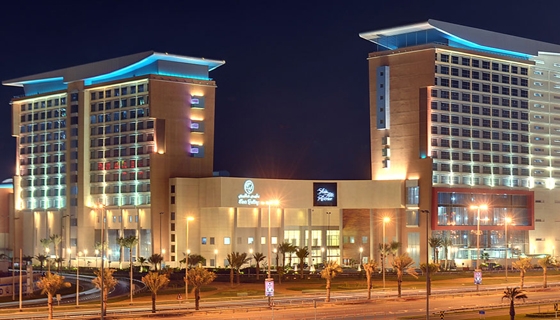The development of middle and lower income housing units in outlying areas in Bahrain is not only welcome news for those looking for a home to buy, it also signals a wave of new opportunities for retailers eyeing untapped markets in the kingdom.
Appetite for retail space, from both local and international investors, has been supported by positive consumer sentiment in recent quarters, after the economy grew 5.1% in constant prices in the third quarter of this year, according to official data published at the start of December, with GDP rising 1.7% in the quarter, despite a mixed economic picture.
Moving out
The retail sector has outperformed other real estate asset classes in the past three quarters, with increased demand from international and local retailers for mall space in the capital as well as smaller community malls, according to global real estate consultancy CBRE.
“Smaller community mall projects are helping to drive progress in the sector with local retail developments in and around the capital witnessing strong demand,” said CBRE in its Q3 2014 MarketView report.
This trend was also noted by consultancy Cluttons in its latest assessment of Bahrain’s property market, which outlined a move from highly centralised retailing in large multi-outlet hubs to retail space outside the capital or smaller neighborhood retail centers. It noted exceptionally strong levels of demand in the first three quarters, especially for smaller units of 50-100 sq m.
This shift has spurred the progress of developments in Bu Quwah, Muharraq, Isa Town and Riffa, with outlying markets yet to be widely serviced by retailers.
“We have already begun to record high demand from retailers, looking for smaller schemes around the capital,” said Harry Goodson-Wickes, Cluttons head for Bahrain.
The demand for more retail space in suburban areas will accelerate in the coming years as state programs to provide subsidized residential units for Bahraini nationals come to fruition. In mid-November, King Hamad ordered that the pace of delivery of new units be stepped up, with another 40,000 homes to be handed over. Many of these units will be in areas outside the main hub of Manama, creating wider opportunities for retailers to serve these expanding urban centers.
Much of the demand will be for consumer goods, household and mid-range general products, rather than high-end or luxury retail outlets that are represented in many of the upscale malls and shopping centers in the capital.
Consumer confidence holds strong
Bahrain’s retailers have also been buoyed by poll results that show rising consumer sentiment. According to the latest regional survey by online jobs website bayt.com and polling company YouGov, released in late September, consumer sentiment has improved since the results of the last survey in March with Bahrain’s consumer confidence index (CCI) climbing from 107.51 points to 113.86. According to the survey, a third of respondents said they intended to buy a desktop or laptop computer within the next six months – one of the highest percentages in the region – while a quarter are planning to buy furniture with demand for white goods and electronics following close behind.
Another key indicator in the CCI is expectations on economy and finance. More than 80% of those surveyed said they expected their financial position to improve or remain the same over the next two quarters, with just 12% expecting a downturn. However, the wider economic outlook is less certain, with just under a third of respondents expecting an improvement in the economy and 19% forecasting a weakening over the following six months.
Bahrain’s parliamentary elections, held at the end of November, came at a time of a mixed economic performance and prospects. Challenges include high unemployment among younger generations − standing at 27.5% according to the World Economic Forum (WEF) report − and weak credit ratings of Baa 2 and BBB from Moody’s and Standard & Poor’s.
Bridging retail trade
Nonetheless, the retail sector is benefitting from its strategic location in the region, helping to lure overseas investment, while large regional events such as the Jewellery Arabia exhibition in November, which attracted retailers from more than 30 countries and drew in sales of BD11m ($29.2m) over five days, are cementing Bahrain’s position globally.
Cluttons noted increasing interest from Chinese retailers keen to enter the local market to take advantage of the lucrative tourist trade from Saudi Arabia, and also helped by projects such as Dragon City, a Chinese-themed retail development in Diyar Al Muharraq that is due to open its doors mid-2015.
The trade between Saudi Arabia and Bahrain will be given a substantial boost thanks to plans to build a second causeway running parallel to the existing causeway. The existing King Fahd Causeway carries more than 8m vehicles annually, though congestion on the 25km road link has seen long delays during peak travel times.
The retail sector is also hoping to ride on the back of tourism and mixed-used projects such as The Avenues, a $50m project to regenerate a stretch of waterfront in Manama, opposite Bahrain Bay. Construction on the landmark project began in October with estimates of its completion in early 2016.
Oxford Business Group
16 December






















































